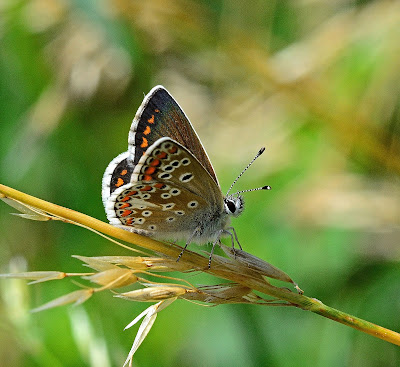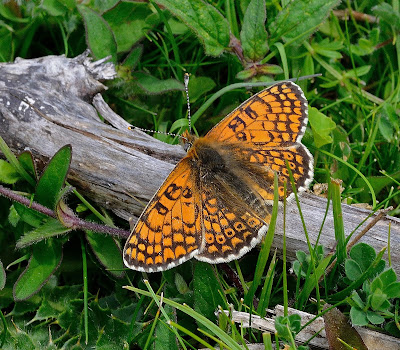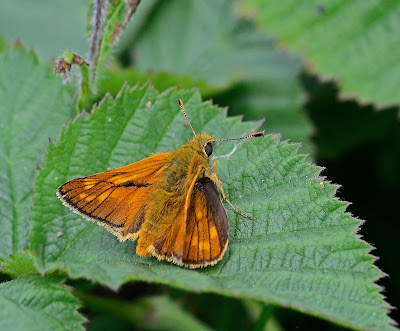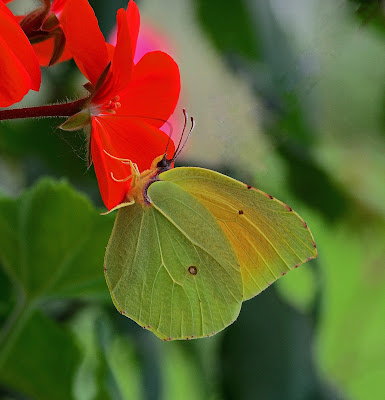With Adonis Blue already reported from several mainland locations,I decided to try my luck today on Bonchurch Down.The numbers of Adonis have decreased in recent years due to less than ideal land management on the Down and the fall in the rabbit population.The Adonis require short downland grass to be successful and the lack of grazers such as the rabbit has allowed the grass to grow long.A check of the male Common Blue butterflies encountered today led to my first record of the year of a Adonis Blue.These two species are very similar,but close inspection will leave no doubt if it is an Adonis. The spectacular and striking sky blue of the male Adonis is unmistakeable.
Not too far away is the premier site for the Glanville Fritillary and since the first appearance of this special butterfly four days ago numbers have steadily increased.Todays count amounted to eight pristine fritillaries all resplendent with their orange and brown chequered wings and a white border.The underside has a pattern of cream and orange bands with black marks.

















































